You’re rushing around the house in the morning, scrambling to make coffee and open the blinds as you get ready to head off to work. As you hurry out the door, you remind yourself not to forget to turn off the lights and lock the front door. For many busy homeowners, this is a daily occurrence. But what if you could control everything in your home with only the touch of a button?
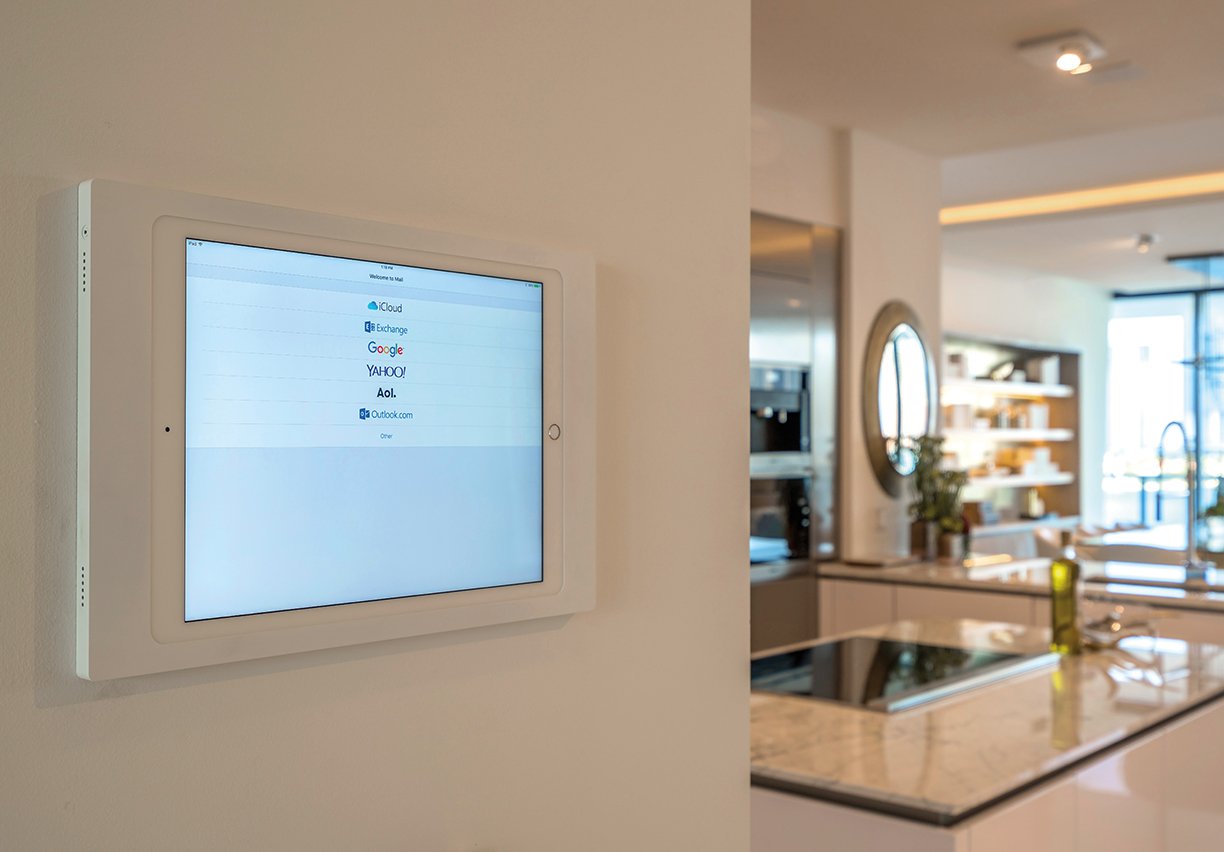
Photo courtesy of Barry Grossman
While this once seemed like the distant future, the rise in smart home technology has made it a reality. It’s 2018, and nearly everything within the home can be controlled with your smartphone — from brewing coffee to adjusting the thermostat. Whether you’re home or not, clocks, speakers, lights, doorbells, windows and appliances can now be controlled automatically from the palm of your hands.
Using Savant Smart Home technology, residents at Residence 2680 can control lighting, climate and security. Meanwhile, the Biometric entry systems allows keyless, fingerprint entry. Residents can even watch TV while showering, as the bathrooms are equipped with in-shower Seura Mirror TVs.
Increasingly, homebuyers are demanding homes with smart technology. Devices like Google Home, Alexa and Amazon Echo are becoming essential household items, which has only increased the movement toward smart homes. In fact, Zion Market Research predicts the smart home market will reach $53.45 billion by 2022, according to Forbes.
At 285 West 110th Street, each resident will have his/her own Amazon Echo for the true feel of living in a smart-home environment. Features can be controlled remotely via a mobile app, including Insteon lighting switches to set the scene, music to greet homeowners when entering and blinds that can be controlled to open and close.
Common areas and residential units at Privé at Island Estates are also equipped with Savant technology, allowing for automated control through any Apple or Android device of all thermostats, audio, visual and window shades.
According to Forbes, 2018 will bring more integration that supports homeowners in 2018 such as an app that reminds you to turn off the lights or to lock the doors, and an alarm that can deactivate upon recognizing your face. Forbes also predicts that technology will become much more efficient, allowing homeowners to control everything from appliances to radio volume from one central location.
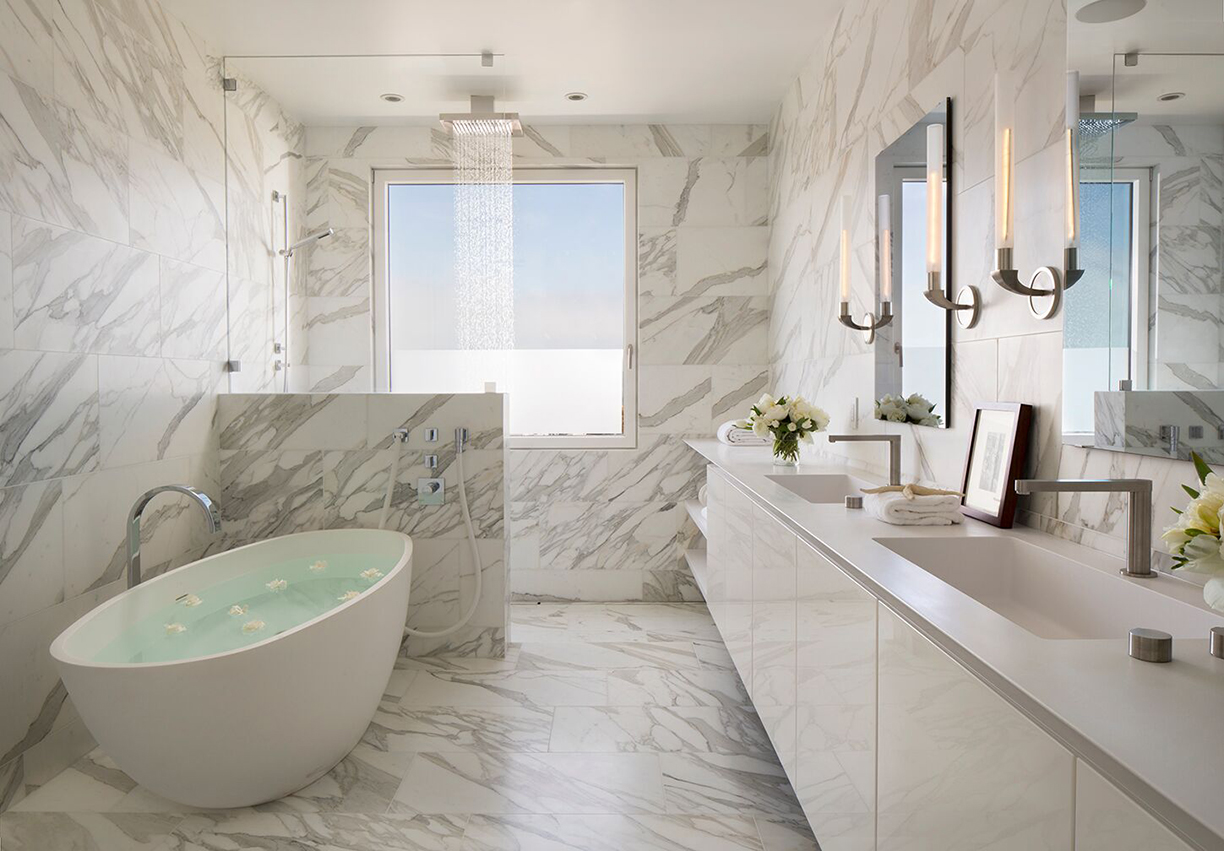
Residence 2680 brings the 21st century into the bathroom with an in-shower mirror with a waterproof TV screen.
Photo courtesy of Troon Pacific
Usually viewed as the nemesis of brick-and-mortar shops, technology is now being employed by retailers to draw people back to the mall.
By Roger Grody
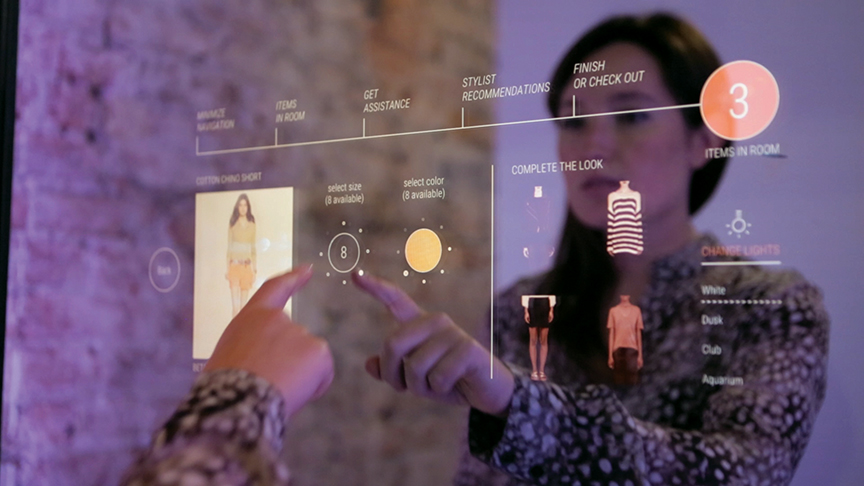
With RFID technology, fitting rooms become interactive. Photo courtesy Oak Labs.
Adjusting to a fundamental shift in how the world shops, retail establishments are struggling to retain customers who have become accustomed to shopping online in their pajamas, or while sipping a latte at their neighborhood café. To get people back to the mall, retailers must offer a more compelling experience, and for some, technology is not the enemy, but the answer.
Fashion designer Rebecca Minkoff, who parlayed a flirty “downtown romantic” style into a global lifestyle brand, is also one of the most technologically ambitious retailers. At her boutiques in New York, San Francisco and L.A., the experience begins at a large touchscreen from which customers can order cappuccino or Champagne, delivered to them as they browse.
At her boutiques, Minkoff has also introduced technology to the dressing rooms, equipped with mirrors doubling as interactive touchscreens that allow customers to adjust the lighting and request alternate sizes or styles. In addition, the “smart mirrors” detect the radio-frequency identification (RFID)-tagged garments and suggest matching pieces or accessories. “The amount of embedded tech that has gone into this retail embodiment has given us the opportunity to reach our ultimate goal in catering to next-generation shoppers,” says Uri Minkoff, the designer’s brother and company CEO.
Burberry, the iconic British luxury brand, also has demonstrated a strong commitment to technology, first at its global flagship store on London’s Regent Street and subsequently at its Shanghai flagship, the largest of seven locations in that city. The illumination of the sleek Shanghai façade changes with the natural light, while 40 strategically placed video screens and 130 speakers reinforce a decidedly high-tech interior.
Using RFID technology, a multimedia experience is triggered every time a customer steps into a dressing room at Burberry Shanghai. Not only are mirrors transformed into video screens — displaying images from a Parisian fashion show, for instance — but product specs and other relevant information are also presented to the customer.
William Toney, vice president of global RFID market development at Avery Dennison, a leader in the field, reports retailers are rapidly embracing this technology. His company manufactures tiny ultra-high-frequency RFID antennae with integrated chips that are adhered to price stickers or sewn-in labels, unnoticed by shoppers.
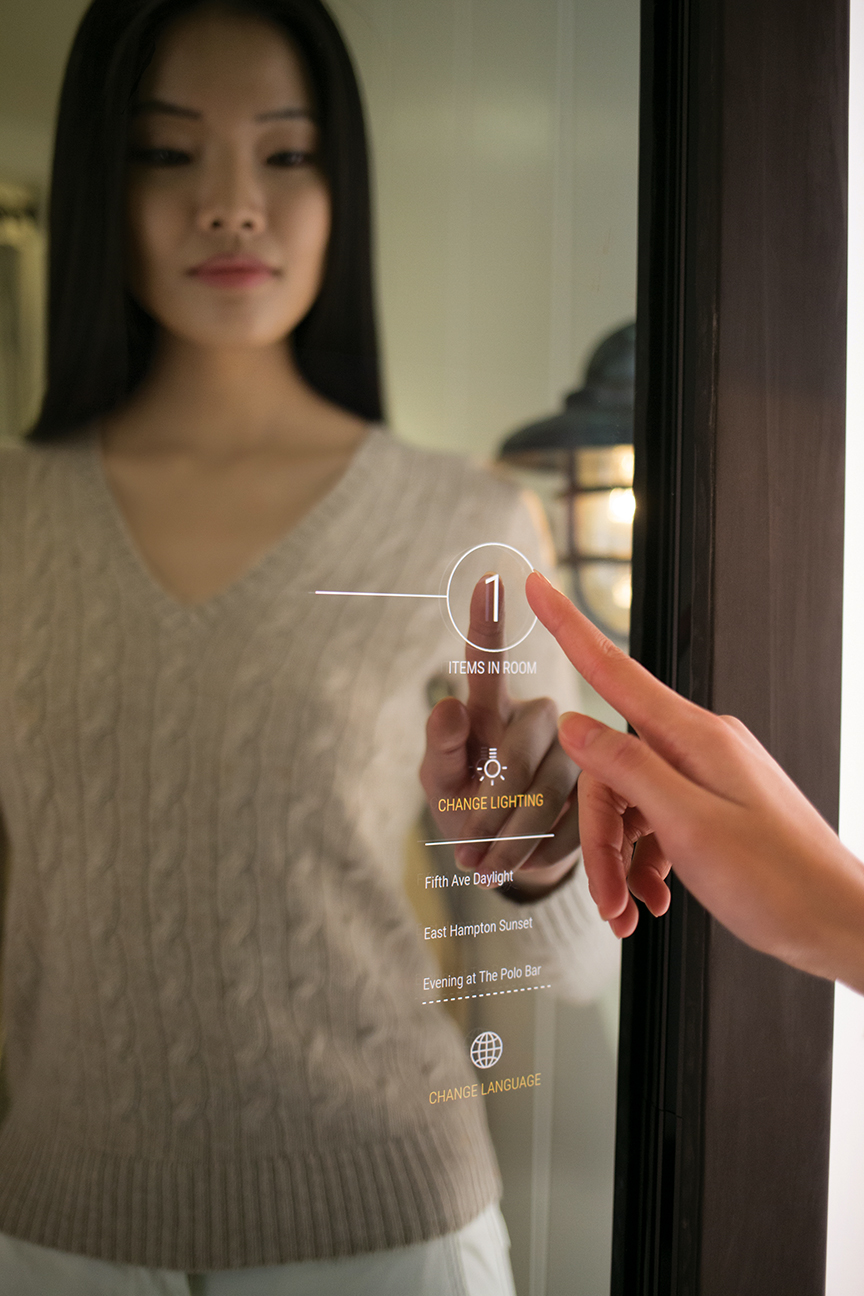
Oak Labs’ smart mirrors transform shopping at Ralph Lauren boutiques. Photo courtesy Oak Labs.
These stickers, which can be scanned from a distance, have revolutionized retail inventory management. Recognizing that customers’ greatest frustration is not being able to find what they’re looking for, retailers welcome the opportunity to increase inventory accuracy from an industry average of 65 percent to 95-plus percent, explains Toney.
By collaborating with high-tech companies like Oak Labs, Avery Dennison’s RFID tags can trigger the interactive experiences pioneered by Rebecca Minkoff and Burberry. “Retailers are beginning to realize the definition of ‘mobile’ is quickly moving away from mobile apps and towards a reality where patrons keep their heads up as the store changes around them,” says Oak Labs CEO Healey Cypher, whose full-length touchscreen mirrors are live at selected Ralph Lauren stores.
“Without anybody having to scan anything, a garment comes to life in the dressing room,” says Toney, who explains the mirror identifies what the customer has brought in and gives her or him an opportunity to interact with the store’s resources. “The greatest contribution of this technology is that it elevates the shopping experience for the consumer,” he maintains.
At its stores in New York, San Francisco and London, outdoor apparel and equipment retailer The North Face offers customers a virtual reality (VR) experience through a collaboration with Jaunt, a Silicon Valley startup. The content, filmed with Jaunt’s proprietary cameras and microphones, provides a fully immersive experience of trekking in Nepal with professional rock climber Renan Ozturk.
“Virtual reality is a powerful medium that has the ability to introduce audiences to incredible people in amazing places,” says Cliff Plumer, president of Jaunt Studios. For The North Face, VR represents an innovative way to share its passion for the outdoors and inspire customers to equip themselves for new adventures.
On The Web
Burberry: www.burberry.com
Ralph Lauren: www.ralphlauren.com
Rebecca Minkoff: www.rebeccaminkoff.com
The North Face: www.thenorthface.com
Avery Dennison: www.averydennison.com
Jaunt: www.jauntvr.com
Oak Labs: www.oaklabs.is
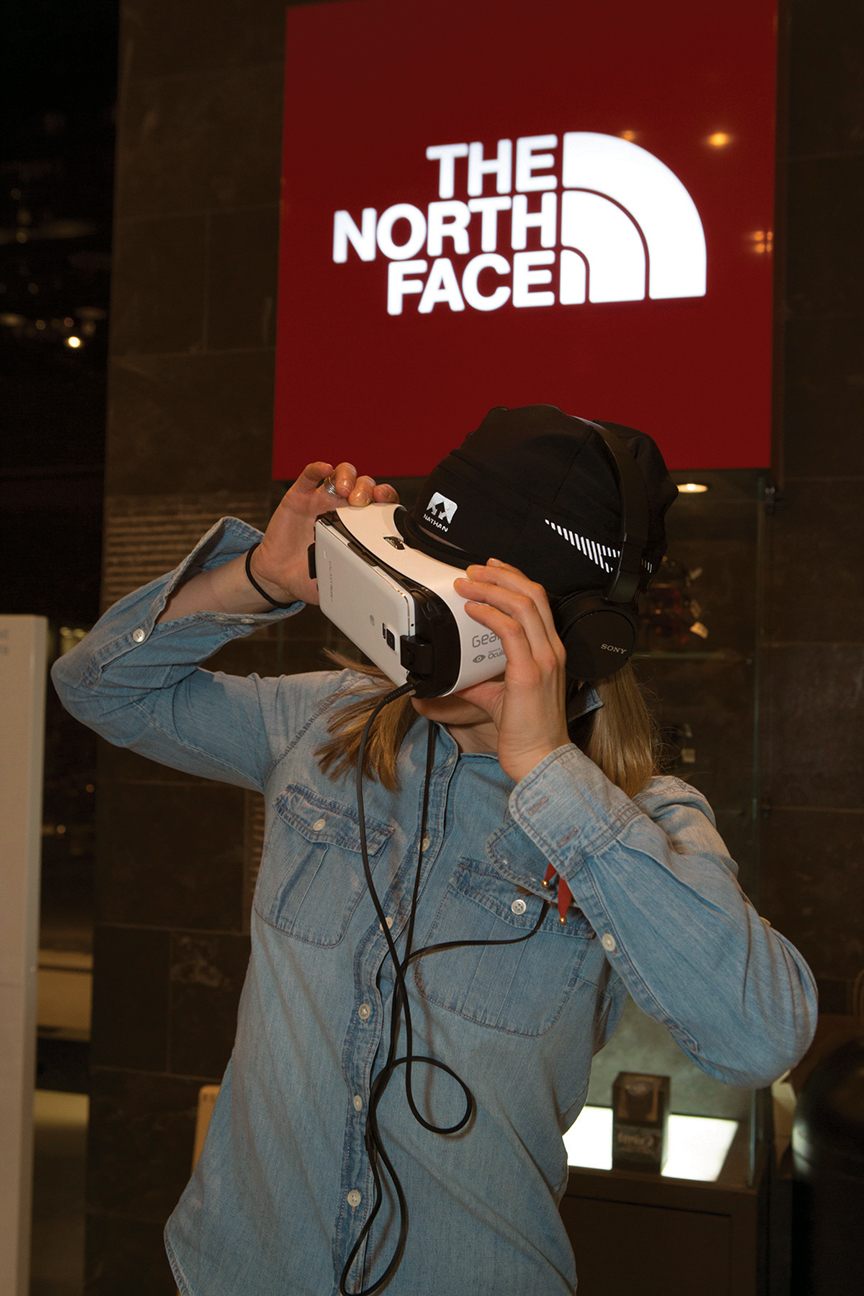
At The North Face, virtual reality transports customers to Nepal; Photo courtesy The North Face.














